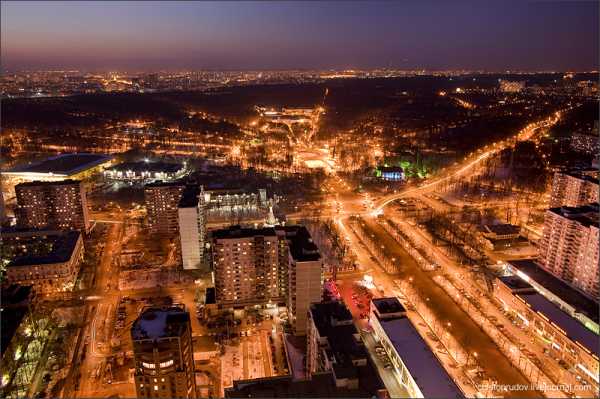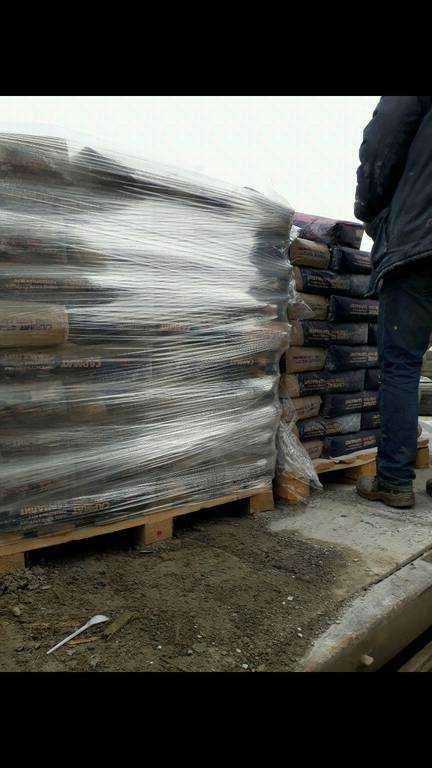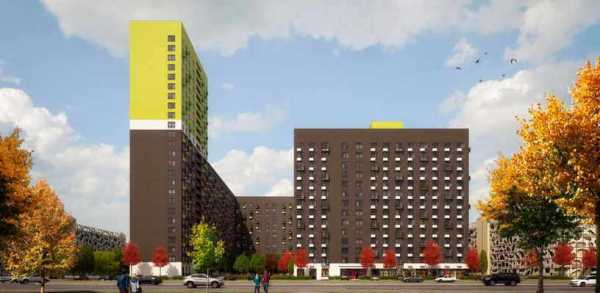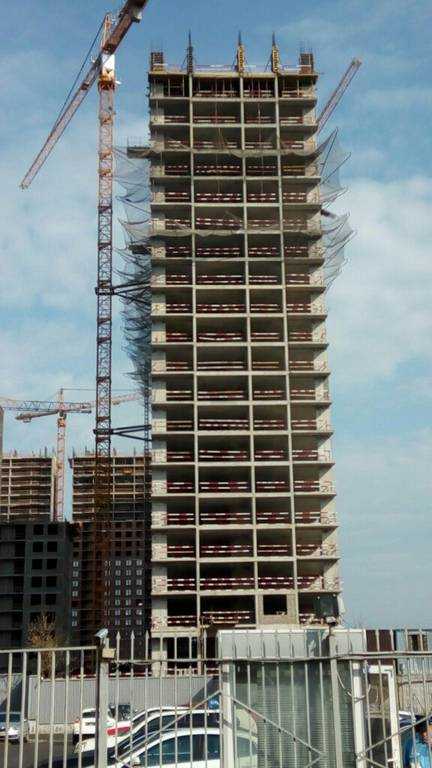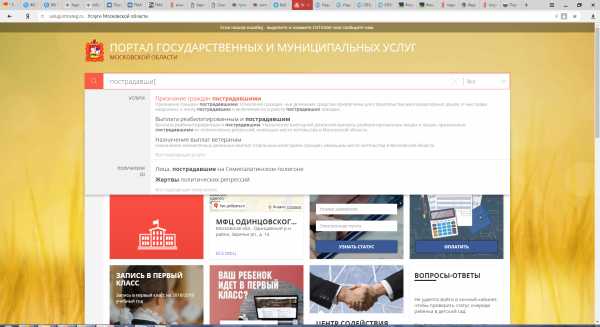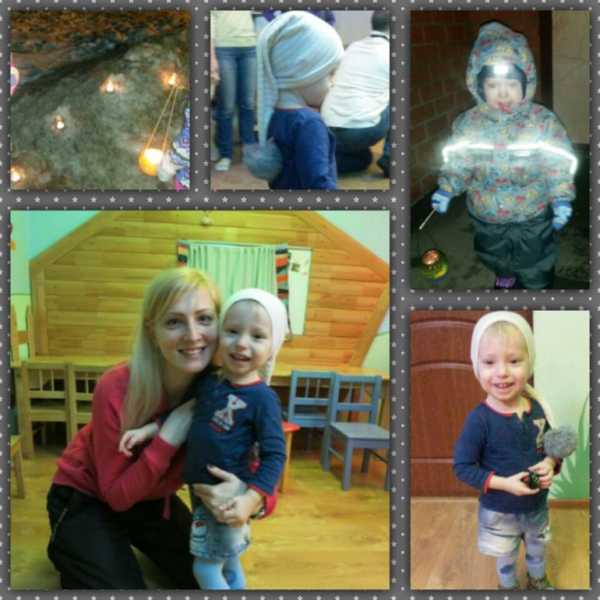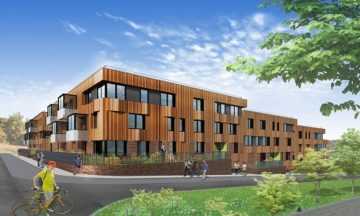Технические характеристики припоя ПОС 61. Пос 1
Противопожарная обработка. Обработка древесины огнезащитным составом ПОС-1
ПОС-1 представляет собой водорастворимую смесь, получаемую смешиванием солей неорганических кислот и специальных добавок. Состав не токсичен, хорошо растворяется в воде и впитывается древесиной. Благодаря уникальным свойствам донного состава, обработанные изделия переходят из группы легко воспламеняющихся материалов, во вторую группу огнезащитной эффективности, то есть в группу трудногорючих материалов. Данный состав идеально подходит для обработки некрашеной древесины любых пород. Согласно нормативам МЧС, противопожарная обработка должна производиться не реже одного раза в течение двух лет. По окончании выполненных работ мы выдаем все необходимые документы.
Как это работает
Действие антипиренов основано на том, что при наличии определенной концентрации таких составов в древесине, они препятствуют горению без источника пламени. При воздействии огня на древесину происходят различные физико-химические процессы, на свойствах которых и основывается огнезащитное действие антипиренов. Это может быть плавление легкоплавких веществ, таких как соли фосфорной, борной, кремниевой кислот. При нагревании, содержащей такой антипирен древесины, образуется оплавленная пленка, которая ограничивает доступ кислорода к поверхности. В результате, часть тепла расходуется на плавление антипирена. Это, в свою очередь, приводит к повышению температуры воспламенения древесины, а, значит — к ее защите. Для огнезащиты дерева так же используют свойства некоторых веществ, разлагаться при нагревании и выделять газы, не поддерживающие горения (аммиак, сернистый газ). Негорючие вещества оттесняют кислород с поверхности древесины и, тем самым, препятствуют горению.
Порядок работы
Пропиточный раствор тщательно перемешивается, процеживается через сетку и отстаивается в течение не менее 2 часов. Отстоявшийся огнезащитный состав ПОС-1 сливается в приготовленную емкость и используется для пропитки. Поверхностная обработка древесины пропиточным составом ПОС-1 производится погружением, кистью, пневмораспылением, способ обработки определяется исходя из особенностей обрабатываемой поверхности.
При пропитке способом погружения время выдержки древесины в пропиточном огнезащитном составе ПОС-1 должно составлять не менее 20-30 минут.
Обработка древесины кистью и пневмораспылением производится на 2 раза при положительной температуре подогретым раствором (50-60)°С, с перерывом не менее 2 часов или за З раза холодным раствором (10-15)°С с перерывом между обработками не менее 6 часов.
Проолифленные и окрашенные любыми красками и составами деревянные поверхности не могут быть защищены огнезащитным составом ПОС-1.
Компания Казгефест ESS является поставщиком современного огнезащитного состава ПОС-1. Имея широкий выбор лакокрасочных материалов и большой опыт в области противопожарной обработки различных поверхностей, наши специалисты помогут принять правильное решение в подборе необходимых видов огнезащитных составов для тех или иных работ. Ассортимент продукции постоянно расширяется, появляются новые современные лаки, краски и составы.
Все материалы компании Казгефест ESS отвечают мировым стандартам и имеют соответствующие сертификаты, протоколы испытаний, а также заводскую гарантию качества.
Если у Вас возникли вопросы, относительно противопожарной обработки, Вы можете задать их нашим специалистам.
www.kazgefest.kz
пос 1
Учреждение образования «БЕЛОРУССКИЙ ГОСУДАРСТВЕННЫЙ ТЕХНОЛОГИЧЕСКИЙ
УНИВЕРСИТЕТ»
Английский язык
Рекомендовано учебно-методическимобъединением высших учебных заведений
Республики Беларусь по химико-технологическомуобразованию в качествеучебно-методическогопособия для студентов
высших учебных заведений, обучающихся похимико-технологическимспециальностям
Минск 2008
3
ПРЕДИСЛОВИЕ
Данное учебно-методическоепособие представляет собой комплекс текстов, соответствующих требованиям действующей программы по английскому языку для неязыковых вузов.
Цель пособия – развить и совершенствовать у студентов навыки различных видов чтения литературы на английском языке с выходом в устную речь.
Пособие, условно состоящее из двух частей, предназначено для студентов химико-технологическихспециальностей.
Впервой части представлен материал по темам общеобразовательного характера: «Республика Беларусь», «Наш университет», «Великобритания», «Наука и технология», «Ученые и их изобретения».
Во второй части особое внимание уделяется дополнительному чтению текстов по той же тематике и стратегиям формирования навыков самостоятельной работы.
Впособии представлена полезная новейшая и актуальная информация по перечисленным темам, которая композиционно хорошо продумана и представляет собой четкое, ясное и логичное изложение.
Упражнения, предназначенные для работы с текстами, подобраны таким образом, чтобы основное внимание акцентировать на развитии у студентов умений читать и понимать литературу на английском языке, дифференцировать более и менее важную информацию и развить у них навыки монологической и диалогической речи.
Вразделы пособия помещены также упражнения, направленные на развитие навыков самостоятельного продуцирования письменного текста.
При подборе заданий для текстов реализованы такие принципы, как языковая и содержательная доступность, а также принципы нарастания сложности материала.
Работа с материалом данного пособия поможет студентам приобрести соответствующий необходимый лексический минимум и сформировать языковые и речевые навыки и умения.
Пособие может быть использовано для работы со студентами I курса всех специальностей университета.
4
UNIT I. BELARUS
Part 1. The Place on Earth: General Description of the Republic of Belarus
Ex. 1. Make sure you know the following words and expressions: terrain n., combine v., inhabitant n., swath n., sloping ridges, glacial
debris, swampy plain, stream n., floating timber, tributary n., tract of forest, conifer n., deciduous trees, proximity n., precipitation n., excessive a., suffer v., spoil v., poison v., affect v., range n.
Ex. 2. Practice the pronunciation of the following words and geographical names:
Europe, Greece, Belgium, Denmark, Russia, Latvia, Lithuania, Poland, the Ukraine, Belarusian Range, the Belarusian Woodland, the Baltic Sea, the Dnieper, the Nieman, catastrophe, fauna, swath, percentage, association.
Ex. 3. Answer the following questions:
1. Why is Belarus called “blue-eyed”?2. What are t he country’s main regions? 3. Which nationality groups make up the largest percentage of the total population? 4. In what part of Belarus does the vast majority of the population live? 5. Why was Belarus changed from a rural nation to an urban nation?
Ex. 4. Speak about the places of interest in the Republic of Belarus that you have visited.
Ex. 5. Read and translate the following text:
Belarus, a generally flat country situated practically in the center of Europe, occupies an area of 207,600 square kilometers. Its area is more than the combined size of Greece, Belgium and Denmark. Its neighbors are Russia to the east and northeast, Latvia to the north, Lithuania to the northwest, Poland to the west, and Ukraine to the south. The population is more than 10 million inhabitants.
Belarus’ mostly level terrain is broken up by the B elarusian Range, a swath of elevated territory, composed of individual highlands, that runs diagonally through the country from west-southwestto eastnortheast. Its highest point is the346-meterMount Dzerzhynskaya, named for Felix Dzerzhinskiy, head of Russia's security apparatus under Stalin. Northern Belarus has a picturesque, hilly landscape with many lakes and gently sloping ridges created by glacial debris. In the south, aboutone-thirdof the republic’s territory around the Pripyat River is taken up by thelow-lyingswampy plain of the Belarusian Woodland (Polesye).
5
Belarus’ 3,000 streams and 10,000 lakes are major features of the landscape and are used for floating timber, shipping, and power generation. Major rivers are the west-flowingZapadnaya Dvina and Nieman, and thesouth-flowingDnieper with its tributaries, the Berezina, the Sozh, and the Prypyat. The largest lakes are the Naroch, the Osweyskoye and the Drisvyaty. Nearlyone-thirdof the country is covered with puschas, large unpopulated tracts of forests. In the north, conifers predominate in forests that also include birch and alder; farther south, other deciduous trees grow. The Belavezhskaya Puscha in the far west is the oldest and most magnificent of the forests; a reservation here shelters animals and birds that became extinct elsewhere long ago. The pride of the reservation is the aurochs – a rare animal that has survived since the glacial times.
Because of the proximity of the Baltic Sea (257 kilometers at the closest point), the country’s climate is moderately continental. Winters last between 105 and 145 days, and summers last up to 150 days. The average temperature in January is –6°C,and the average tem perature for July is about +18°C, with high humidity. Average annual pre cipitation ranges from 550 to 700 millimeters and is sometimes excessive.
The nature of Belarus has suffered much from the nuclear catastrophe that took place in Chernobyl in 1986. The radiation has spoiled our soil and air, rivers and lakes; it has poisoned our flora and fauna. Besides it has badly affected the health of people and the climate.
Ex. 6. Complete each sentence using a word derivationally related to the word given in brackets:
1. The Republic of Belarus occupies an … geopolitic al position in the centre of Europe (advantage). 2. The territory of Belarus is crossed by the shortest ways of … from central and … regions of Ru ssia to West European countries, as well as between the Baltic and Black Seas (to communicate, east). 3. The distance from the state capital, Minsk, to capitals of the … states are: to Vilnius 215 km, to Riga 470 km, to Warsaw 550 km, to Kiev 580 km, and to Moscow 700 km (neighbor). 4. The … of Belaru s’ territory is 560 km from north to south and 650 km from west to east (long). 5. As for 1.01.2002, the … of the Republic of Belarus constituted about 9.99 million people with more than 100 ethnic groups (to populate). 6. Thirty … types of minerals have been found in the territory of the country and more than 4 thousand mineral deposits, of which 600 are under … (differ, to expl oit). 7. The climate … features are conditioned by the breath of the Atlantic Ocean (to specify). 8. The number of … at enterprises and … is 4.34 millio n people; of them, 1.14 million persons are employed in industries, and 0.51 million people in agriculture (to employ, to organize). 9. The Republic of Belarus consists of 6
6
regions which include 118 administrative districts and the City of Minsk. There are 110 towns and 108 … with the status of a town (to settle).
Ex. 7. Match the words to their definitions:
1) deciduous | a) area of soft wet land; |
2) reservation | b) rain, snow, sleet, dew, etc., formed by condensation of |
3) contaminate | water vapor in the atmosphere; |
4) varied | c) visually pleasing, especially in being striking or vivid; |
5) alternate | d) person or animal that is a permanent resident of a |
6) swamp | particular place or region; |
7) precipitation | e) ground or a piece of ground, especially with reference |
8) inhabitant | to its physical character; |
9) terrain | f) shedding all leaves annually at the end of the growing |
10) picturesque | season and then having a dormant period without leaves; |
| g) sanctuary, area where by law it is forbidden to kill |
| birds and animals; |
| h) of different sorts, diverse; |
| i) come one after the other, by turns; |
| j) make dirty, impure or diseased. |
Ex. 8. Insert prepositions where necessary:
Minsk Region is located … the middle of the republi c. Its area is 39.9 thousand km². The center … the Region is Minsk. The Region comprises 22 Districts, 24 towns, and 19 urban-typesettlements. This is the only Region in
Belarus not directly bordering… other states, but i | mportant transport corridors | |
running … it offer good opportunities … maintaining | beneficial economic | |
relations … CIS and foreign countries. Machine-buil | ding and chemical | |
industries account for the largest share … the outp | ut in the Regional industrial | |
structure. In addition, agricultural processors are highly developed … the Region. The Region ranks first in the republic … fo od, flour-milling,and cereal and mixed feed output. Mineral resources have been prospected and are being exploited in the Region. The most important … them are potassium and rock salts, and also peat, construction materials, chalk, slate coal, iron ores, mineral water, etc. The dairy and beef husbandry, pig husbandry, potato growing supplemented … flax growing and sugar beet growing in the southwest of the Region are developed.
Ex. 9. Substitute the words in italics by their synonyms:
The Republic of Belarus (Belarus) is located in the eastern part of Europe. Theterritory of Belarus is 207.6 thousand square kilometers. It is acompact country. The longest distance, 650 km, is from West to East, and 560 km from North to South. By the size of its territory, the Republic occupies the 13th place among the European countries and the 6th among the
7
CIS countries (following Russia, Kazakhstan, Ukraine, Uzbekistan and Turkmenistan). The Belarusian territory in Europe is slightly smaller than that of Great Britain and Romania, and more than 2.2 timesbigger than Portugal and Hungary. On 01.01.2005, thepopulation of Belarus constituted 9.9 million people. Representatives of more than 100 nationalities live in Belarus. Themajority of the population is Belarusian,significant numbers of Russians, Poles, Ukrainians and other nationalities live in Belarus.
The highest point in Belarus is 346 meters. Averaging only 200 meters above sea level, the country is predominatelygently rolling fields in the north andmarshy lowlands in the south. More than half the land is used foragriculture. Someone-thirdis denselyforested with large stands of spruce, pine, oak, and beech.
Ex. 10. Read the information below and think of the word, which best fits each space. Use only one word in each space:
In Belarus, about 30 types of mineral … have been f ound (over 4,000 mineral fields and deposits). Of special significance … them are potassium salts: by their industrial reserves the country is among the … countries in Europe. The Republic … rich in non-oreminerals lik e granite, dolomite, marl and chalk,low-meltingand …-meltingclay, loams, sand and gravel materials, raw … for manufacture of natural paints (boggy iron ore, ochre, glauconite, etc.) and possesses a rather powerful raw material base for manufacture of construction materials. Peat reserves … widely spre ad in Belarus.
Ex. 11. Prove whether the following statements are true or false using the information from the text:
1. Belarus is situated in Asia. 2. It borders on France. 3. Our native land is remarkably beautiful. 4. Most of the Belarusian territory is covered with mountains. 5. The aurochs live in the Belarusian Polesye. 6. The climate of Belarus is continental. 7. The nature of our country has suffered greatly from the nuclear catastrophe that took place in Chernobyl in 1976. 8. Belarus has always been considered a poor land with no other resources except peat. 9. All rivers of the republic belong to three sea basins of the Black, Baltic, and North Seas. 10. Belavezhskaya Puscha is a large province.
Ex. 12. Complete the statements below. Give extended answers:
1. The text is devoted to … . 2. The text gives (pr esents, provides) information regarding … . 3. At the beginning of th e text special attention is paid to … . 4. The text goes on saying that … . 5. Further the text contains a detailed description of … . 6. Besides some factua l information is given
concerning … . 7. In conclusion the text reads that | … . 8. On reading the text |
we realise the fact that … . 9. Moreover we clearly | understand that … . |
8 |
|
Ex. 13. Work in groups. Find out from your partners:
–where Belarus is situated and what its area is;
–what countries Belarus borders on;
–what consequences of the Chernobyl catastrophe ar e.
Ex. 14. Prove that:
–Belarus is remarkably beautiful;
–our country has many lakes and rivers;
–the nature of Belarus has suffered much.
Ex. 15. Explain why:
–after the Chernobyl catastrophe people had to lea ve their places and move to other villages and towns.
Ex. 16. Imagine that:
–a new pupil has come to your group from Russia. H e knows very little about Belarus. Tell him what you know about your native country;
–you are preparing a report about your native coun try but you haven’t enough information about Belarus. Ask your friend to help you. Role-playthe dialogue with your partner.
Ex. 17. Write a short essay on one of the following topics:
– advantages and disadvantages of the geographical position of Belarus;
– your favorite place of visit in Belarus.
Part 2. The Political System, Constitution and State Symbols
of the Republic of Belarus
Ex. 1. Make sure you know the meaning of the following words and expressions:
anthem n., submit v., adopt v., personify v., issue v., edict n., stipulate v., guideline n., appoint v., enactment n., flagstaff n., guarantee v., binding force, provide v., run v., the National Assembly, the Council of the Republic, the Deputies, voter n., Supreme Court, Economic Court.
Ex. 2. Practice the pronunciation of the following words and proper names:
collapse, decree, the Procurator-General,precise, legislative, executive, judicial, contour, sovereignty, wreath, rectangular, longitudinal, decorative.
Ex. 3. Answer the following questions:
1. When is the state called presidential? 2. Who is the current President of the republic? 3. Who is the Prime minister of the republic? On what term is the President elected?
Ex. 4. Have you ever studied the main law of our country? If so, say what articles concern the youth policy.
9
Ex. 5. Read and translate the following text:
Like any country, Belarus has its own constitution, anthem, and state symbols. Constitution is the main document in the state. When Belarus was a member of the former Soviet Union it submitted to the Constitution of the USSR. But after the collapse of the USSR in 1991, the new Constitution of the Republic of Belarus was adopted by the Supreme Soviet on March 15, 1994. The new Constitution consists of a preamble and nine chapters: 1. Principles of the Constitutional System. 2. The Individual, Society, and the State. 3. Electoral System. Referendum. 4. The President, Parliament, Government, the Courts. 5. Local government and self-government.6. The Procurator’s office. The State Supervisory Committee. 7. Financial and Credit System of the Republic of Belarus. 8. The application of the Constitution of the Republic of Belarus and the procedure for amending the Constitution. 9. Final and transitional clauses.
According to the new Constitution, Belarus is a presidential republic where the role of the President is quite strong. He is the head of the state and the executive power, guarantor of the Constitution and civil rights. According to the Constitution, president personifies unity of the people, guarantees realization of internal and external policy of the state, and represents the Republic of Belarus in relations with other states and international organizations. President issues edicts and decrees that have the binding force overall territory of the Republic of Belarus. In cases stipulated by the Constitution, president issues decrees having force of laws. Directly or through special bodies provides the execution of decrees and edicts. The President, however, does not run the economy of the country but sets the guidelines and controls the work of the Government.
The Government (Council of Ministers and a number of Ministries and Committees) is working with current issues of a day-to-daybasis, thus exercising executive powers.
The Parliament, i.d. the National Assembly comprises two houses – the House of Representatives (110 deputies and Supreme House) and the Council of the Republic (64 deputies).
The Council of the Republic is the house of territorial representation. Eight members of the Council are appointed by the President of the Republic of Belarus, while the rest are elected at the sittings of the Deputies of the local Soviets of Deputies of the basic level: 8 from each of the six regions of the Republic and of the city of Minsk. The deputies to the House of Representatives are elected directly by the voters.
Judicial power is exercised by General Courts (Supreme Court, plus regional, district, and town courts) and by Economic Courts (Supreme
10
Economic, plus regional, district, and town economic courts). A Constitutional Court controls correspondence of the laws with the Constitution. The Procurator-Generalsupervises the precise and uniform execution of laws, decrees, and other regulatory enactments by all state government bodies, local Soviets and other judicial and physical persons.
The National Emblem of the Republic of Belarus, which is a symbol of state sovereignty of the Republic of Belarus, represents a green-coloredcontour of the Republic of Belarus in golden rays radiated by the sun over the globe. On top of the contour is afive-pointedred star. The emblem is set in a frame of wreath of goldenwheat-earsinterlaced with clover flowers on the right and flax flowers on the left.Wheat-earsare interlaced with ared-greenribbon carrying a golden inscription “The Republic of Belarus” at the bottom.
The National Flag of the Republic of Belarus, which is a symbol of state sovereignty of the Republic of Belarus, is a rectangular cloth consisting of two longitudinal stripes: red upper stripe and green lower stripe that are two-thirdsandone-thirdof the flag width respectively. A verticalred-on-white Belarusian decorative pattern.
The red color of the flag signifies the past history of Belarus, as the color used by the Belarusian forces at the Battle of Grunwald, and of the Red Army when they were fighting Nazi Germany during World War II. Green stands for the bright future ahead of Belarus, and also represents the many forests located in the country. While the colors of the flag are red, green, and white, the exact shades have not been determined by either law or decree.
The decorative pattern designed in 1917 by Matrena Markevich is commonly used in Belarus to show local plants and flowers. These patterns are also woven into outfits, and also used for a traditional woven craft called rushniks. Rushniks are traditional towels decorated with the ornamental pattern that are used for ceremonial events. An example of their use would be a host offering his guests bread and salt, which would then be served on a rushnik. Rushniks are also used at religious services, funerals, and other social functions. On the current flag, the ornamentation is used to symbolize the cultural past, and the unity of the Belarusian people.
Ex. 6. Complete each sentence using a word derivationally related to the word given in brackets:
1. The Belarusian scientists reached a … progress in the different spheres of fundamental research (to signify). 2. … of scientific schools in the sphere of mathematics, theoretical physics, material science, etc. are known worldwide and have been highly appraised in Belarus and enjoyed an international … (to achieve, to recognize). 3. Find ings of some researches have the highest rank of significance and are registered as … discoveries
11
(science). 4. Applied research and … are mainly conducted within the framework of 32 state scientific and technical programs designed to solve
most important economic, … and social problems for | 2001–2005,and also | |
within the framework of sectoral and … scientific a | nd technical programs | |
and … projects (to develop, environment, region, | to innovate). 5. The | |
research and developments of the Belarusian scientists are | aimed at | |
addressing problems in the priority spheres of scientific and … | activity | |
(engineer). 6. All types of … in the … , social and administrative spheres are scientifically supported to greater or lesser extent (active, to produce).
Ex. 7. Match the words to their definitions:
1) sovereignty | a) to represent in words; describe; |
|
2) guarantor | b) to watch over so as to maintain order, etc.; |
|
3) edict | c) serving to decorate or adorn; ornamental; |
|
4) guideline | d) the fundamental political principles on which a | |
5) government | state is governed, especially when considered as | |
6) court | embodying the rights of the subjects of that state; | |
7) symbol | e) something that represents or stands for something | |
8) constitution | else, usually by convention or association; |
|
9) decorative | f) an authority having power to adjudicate in civil, | |
10) supervise | criminal, military, or ecclesiastical matters; |
|
11) depict | g) the executive policy-makingbody of a political | |
| unit, community, etc.; ministry or administration; | |
| h) a principle put forward to set standards or | |
| determine a course of action; |
|
| i) a decree, order, or ordinance issued by a sovereign, | |
| state, or any other holder of authority; |
|
| j) a person who gives or is bound by a guarantee or | |
| guaranty; surety; |
|
| k) supreme and unrestricted power, as of a state. | |
Ex. 8. Insert prepositions where necessary: |
| |
The Constitution provides … the freedom … religion, | with all | |
denominations equal. More than 30 religious societies are registered and receive tax-exemptstatus. The Belarusian Orthodox Church is by far the largest … the country, followed … the Roman Catholi c Church. Various Protestant denominations (including Evangelical Baptist,Seventh-day
Adventist, Calvinists, Lutherans, Apostolic Christian, | and others) Judaism | |
and Islam are represented … smaller communities | … t | he country. |
Missionary groups, such as Campus Crusades, Mormons, Jehovah’s Witnesses, and the International Christian Fellowship have a growing number … followers. The Jewish community has not fu lly recovered … the
12
studfiles.net
Посёлок 1-й — Википедия
| Посёлок | |
| Посёлок 1-й | |
| 56°01′34″ с. ш. 87°48′56″ в. д.HGЯO | |
| РоссияРоссия | |
| Кемеровская область | |
| Чебулинский | |
| Алчедатское | |
| 158[1] м | |
| UTC+7 | |
| 1110[2] человек (2010) | |
| +7 38444[3] | |
| 652280[4] | |
| 32 237 804 003 | |
| 32 637 404 111 | |
Показать/скрыть карты Посёлок 1-й 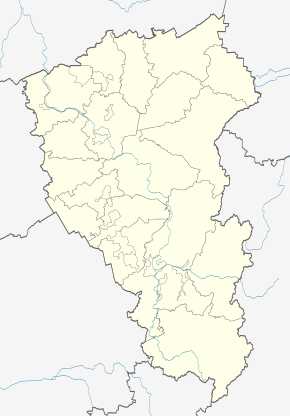 Посёлок 1-й | |
Посёлок 1-й — посёлок в Чебулинском районе Кемеровской области. Входит в состав Алчедатского сельского поселения[5].
География
Центральная часть населённого пункта расположена на высоте 158 метров над уровнем моря[1].
Население
По данным Всероссийской переписи населения 2010 года, в посёлке Посёлок 1-й проживает 1110 человек (652 мужчины, 458 женщин)[2].
Видео по теме
Примечания
- ↑ 1 2 Определение высоты над уровнем моря по координатам (рус.). latlong.ru. Проверено 29 октября 2017.
- ↑ 1 2 Численность населения городских округов, муниципальных районов, городских и сельских поселений, городских населенных пунктов, сельских населенных пунктов (рус.). Территориальный орган Федеральной службы государственной статистики по Кемеровской области. Проверено 29 октября 2017.
- ↑ Телефонные коды Кемеровской области (рус.). Справочник "Indexmain". Проверено 29 октября 2017.
- ↑ Почтовые индексы населённых пунктов Чебулинского муниципального района (рус.). Сайт "Почтовые индексы России". Проверено 29 октября 2017.
- ↑ Устав Чебулинского муниципального района (рус.). Официальный сайт Администрации Чебулинского муниципального района Кемеровской области. Проверено 29 октября 2017.
| Это заготовка статьи по географии Кемеровской области. Вы можете помочь проекту, дополнив её. |
| Административный центр — пгт: Верх-Чебула1-й • 2-й • 3-й • 4-й • Алчедат • Боровой • Дмитриевка • Ивановка • Казанка-20 • Карачарово • Кураково • Курск-Смоленка • Михайловка • Мурюк • Николаевка • Новоивановский • Новоивановский 2-й • Новоивановский 3-й • Новоивановский 4-й • Новоказанка • Орлово-Розово • Петропавловка • Покровка • Усманка • Усть-Серта • Усть-Чебула • Чумай • Шестаково |
wikipedia.green
Технические характеристики припоя ПОС 61 с канифолью 1 мм и 8 мм
Припой является основным присадочным материалом, который помогает спаивать две металлические детали между собой или заделывать отверстия и трещины новым слоем. С учетом того, что у каждого металла могут быть свои особенности, которые влияют и на свойства спаивания, создаются специальные припои, которые обладают различным спектром физических свойств. Одним из таких является припой ПОС 61, который относится к оловянно-свинцовой группе. Это распространенная серия марок, которая приобрела популярность, как в промышленной среде, так и в домашних условиях. Сюда же входит наиболее близкий по свойствам припой ПОС 60, а также более тугоплавкий припой ПОС 30 и другие. Благодаря высокому содержанию олова в данном сплаве, температура плавления является достаточно низкой. Это один из самых легкоплавких пропоев, так как к ним относятся все сплавы с температурой плавления ниже 450 градусов Цельсия, тогда как здесь она ниже 200. Припой ПОС 61 ГОСТ 21931-76.
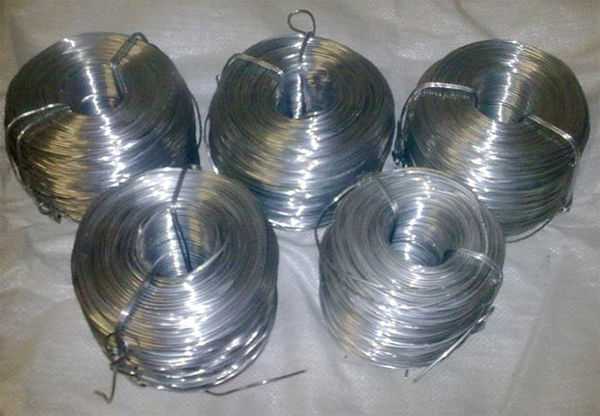
Припой для пайки ПОС 61 ГОСТ 21931-76
Благодаря всем этим свойствам материал получил высокую текучесть, что в данном случае является большим плюсом, так как позволяет расплавлять все даже при помощи обыкновенных домашних паяльников, а также получать соединение достаточно высокой надежности, так как во время растекания, расплавленный металл проникает во все выемки и трещины в основном металле, что позволяет надежно скрепить изделие. Помимо этого стоит отметить смачиваемость поверхности, благодаря чему пайка проходит без серьезных проблем и почти не возникает бракованных соединений. Каждое соотношение основных элементов, которые имеет в своем составе пропой ПОС 61, определяют его уникальные свойства. Добавки других элементов делают все еще более разнообразным. В данном случае есть возможность работать с самыми распространенными металлами, которые применяются в технической области. Это латунь, медь, оцинкованная сталь и прочее. Температура пайки припоем ПОС 61 позволяет без проблем использовать его при работе с радиотехникой, где нужно очень деликатное отношение и большие температуры могут повредить деталям. Это же касается и тонких листов и других теплочувствительных вещей.
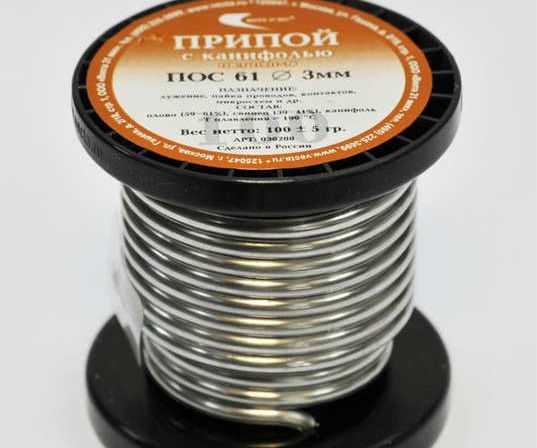
Припой ПОС 61 3мм
Температура плавления припоя ПОС 61 дает еще один важный эффект. Он может использоваться не только в качестве присадочного материала, но и как средство для лужения жала паяльника и места спаивания на деталях. Как правило, чем меньше содержится в составе свинца, тем больше имеется дополнительных элементов. Здесь, помимо олова, встречается еще сурьма, которая присутствует не во всех марках данной серии. Герметичность получаемых швов обуславливается высоким качеством соединения. Дело в том, что многие люди в домашних условиях применяют все для пайки медных труб в водопроводе и прочих системах. Простота использования обеспечивает столь большую востребованность, так как пропой ПОС 61 отлично справляется с заделкой трещин и отверстий в емкостях, где хранятся жидкости и так далее. Деликатное обращение с чувствительными к температуре материалами делает еще один вклад в популярность данной марки припоя.
Разновидности
Припой ПОС 61 выпускается в нескольких разновидностях, которые отличаются преимущественно по внешнему виду, но не по составу. Следует выделить основные разновидности:
- В виде проволоки. Толщина материала составляет от 1 до 7 мм, с шагом в 0,5 мм. Это один из самых удобных и распространенных вариантов, которые наиболее часто используются. Проволока выпускается в бухтах и отлично плавится при помощи горелки или паяльника.

Припой ПОС 61 в виде проволоки
- Припой ПОС 61 с канифолью в виде трубок. Стоит отметить, что это единственный вариант, где припой ПОС 61 с канифолью 1 мм сразу идет. Здесь присутствует канифоль еловая, которая отлично сочетается с данным материалом.

Припой ПОС 61 с канифолью
- Припой ПОС 61 пруток 8 мм, или другого диаметра. Это небольшие длинные части металла, которые удобно использовать в домашних условиях.
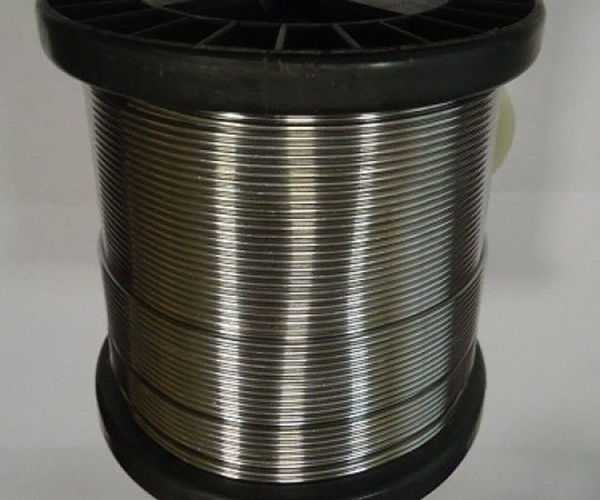
Припой ПОС 61 пруток 8 мм
- Припои оловянно свинцовые бессурмянистые марки ПОС61 в виде ленты. Это относительно тонкие изделия, которые выпускаются длинными продолговатыми лентами и не имеют ни каких добавок.
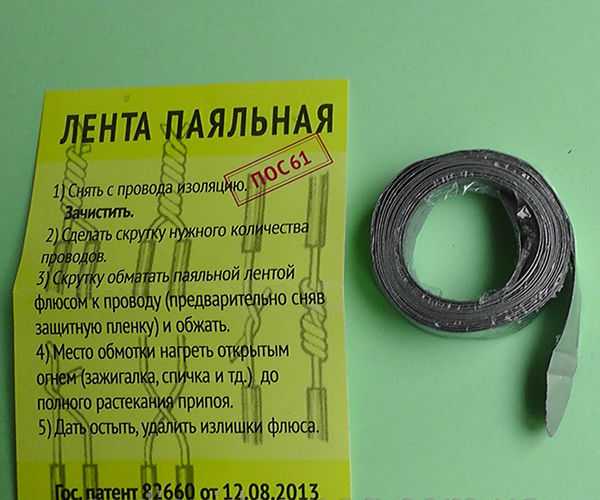
Припой оловянно свинцовый бессурмянистый марки ПОС61 в виде ленты
Химический состав припоя ПОС 61
| Название элемента состава | Примерное содержание в припое, % |
| Олово | 61 |
| Свинец | 38-39 |
| Сурьма | 0,05 |
| Висмут | 0,01 |
| Железо | 0,02 |
| Никель | 0,02 |
| Сера | 0,02 |
Физические свойства
Технические характеристики припоя ПОС 61
| Марка | Температура плавления, °C | Плотность, грамм/см квадратный | Сопротивление удельное | Теплопроводность | Сопротивление на разрыв | Удлинение относительное, % | Вязкость ударная, кгс/см2 | |
| Начальная | Конечная | |||||||
| ПОС 61 | 183 | 189 | 8,5 | 0,139 | 0,12 | 4,3 | 46 | 3,9 |
Сортамент и размеры
| Диаметр проволоки, мм | Возможная погрешность, мм |
| 1 | 0,085 |
| 1,2 | 0,09 |
| 1,5 | 0,1 |
| 1,8 | 0,15 |
| 2 | 0,15 |
| 2,5 | 0,17 |
| 3 | 0,17 |
| 3,5 | 0,16 |
| 4 | 0,16 |
| 5 | 0,17 |
| Величина диаметра, мм | 8 | 11 | 13 | 15 |
| Наружный диаметр, мм | 1 | 1,5 | 2 | 2,5 | 3 | 3,5 | 4 | 5 |
Ширина, мм | От 8 до10 | От 10 до 15 | ||||||
Толщина, мм | 0,8 | 1 | 1,5 | 2 | 2,5 | 3 | 4 | 5 |
Примеры расшифровки маркировки
Плотность припоя ПОС 61 является относительно низкой, что определяется его составом. Именно состав, а также его тип, и отображает маркировка изделия:
- ПОС – данная аббревиатура обозначает, что марка относится к оловянно-свинцовому типу, где доминирующими элементами являются олово и свинец.
- 61 – процентное количество олова в составе
Фирмы производители:
- КиевЦветМет;
- «Технологические Линии»;
- Вадис-М;
- Арсенал;
- Техноскрап.
svarkaipayka.ru


